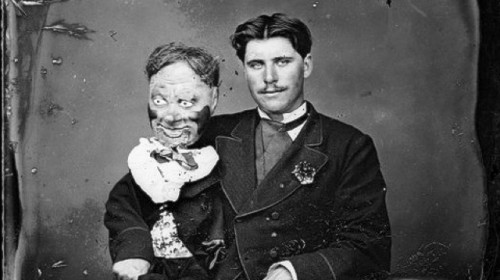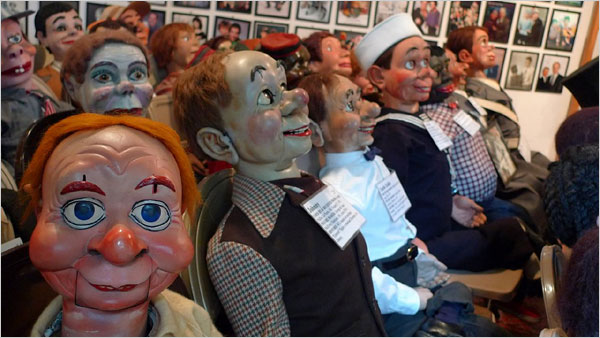Whether you love it or hate it, ventriloquism is something that is designed to entertain. Although today’s dummies are often held up in jest and humor, the figure has not always been quite so comic. If you harbor a deep seated fear of ventriloquist’s dummies, you might be surprised to found out how normal that might be. The ventriloquist has had a long and winding history and over the course of time, things haven’t always been so sunny.
Springing into life in the Middle Ages, ventriloquism came about in very somber circumstances. During the period, the act was considered as a form of witchcraft by Christians and was punishable by death, going against the deep rooted religious culture. In Latin, the word stems from something that “speaks from the stomach”, which the Greeks went on to describe as gastromancy, an act directly related to necromancy. In this light, the ventriloquist was viewed as a figure who could speak to the dead and subsequently, have them speak to the living. They were a go between for the dead and living and for many people, this was simply too dark an idea to conceive.
Over the centuries, however, the act of ventriloquism became slightly less taboo. While it was seen as strange by many facets of society, the act moved to the stage in the 1800s, becoming a dark and twisted form of entertainment. Alongside magicians, ventriloquists were, in a sense, normalized, taking to the stage and attracting a mass following. Some of the most successful figures performed with entire families of dolls, complicating the act and pushing the entertainment forwards.
The first celebrity of the ventriloquism world came to light some years later after having made a splash on the stage. Known as The Great Lester, the ventriloquist was lauded for his depictions of characters Frank Byron and Broadway Eddie, attracting a mass following wherever he went. The Great Lester went further than anyone had ever been before, drinking glasses of water while his dummies continued to speak. While some audience members were utterly enthralled by the act, others were put off, finding the act of inanimate objects coming to life too uncanny for words.
It wasn’t until 1900s vaudeville that ventriloquism really became what it is today. During these years, the dummies went from sitting on props and tables to sitting on the ventriloquist’s knee, using moveable mouth pieces to give off the impression that they were really talking. As they would commonly perform in theaters, the dummies were kitted out with heavy stage makeup in order to ensure that even the punters in the back row could see what was going on.
Since this change, the relationship between the ventriloquist and their doll became all the more intimate. Experts in the field were known to have such close ties with their prop that they even incorporated them into their everyday lives. Famed puppeteer Eddie Bergen became internationally famous thanks to the shenanigans he put on with his doll Charlie McCarthy. Away from the stage, the two were just as inseparable, with Bergen referring to McCarthy as his son from time to time.
Today, the ventriloquist’s doll is a dividing subject point. While many people claim to be taken in by the strange act, many others are truly terrified by the thought of a talking inanimate object. Books and films have tapped into this fear, representing the dummy as something to be genuinely feared. While they might not be as popular today as they once were, ventriloquists still have a place in society, bringing to life the act that first came to light many centuries ago.





